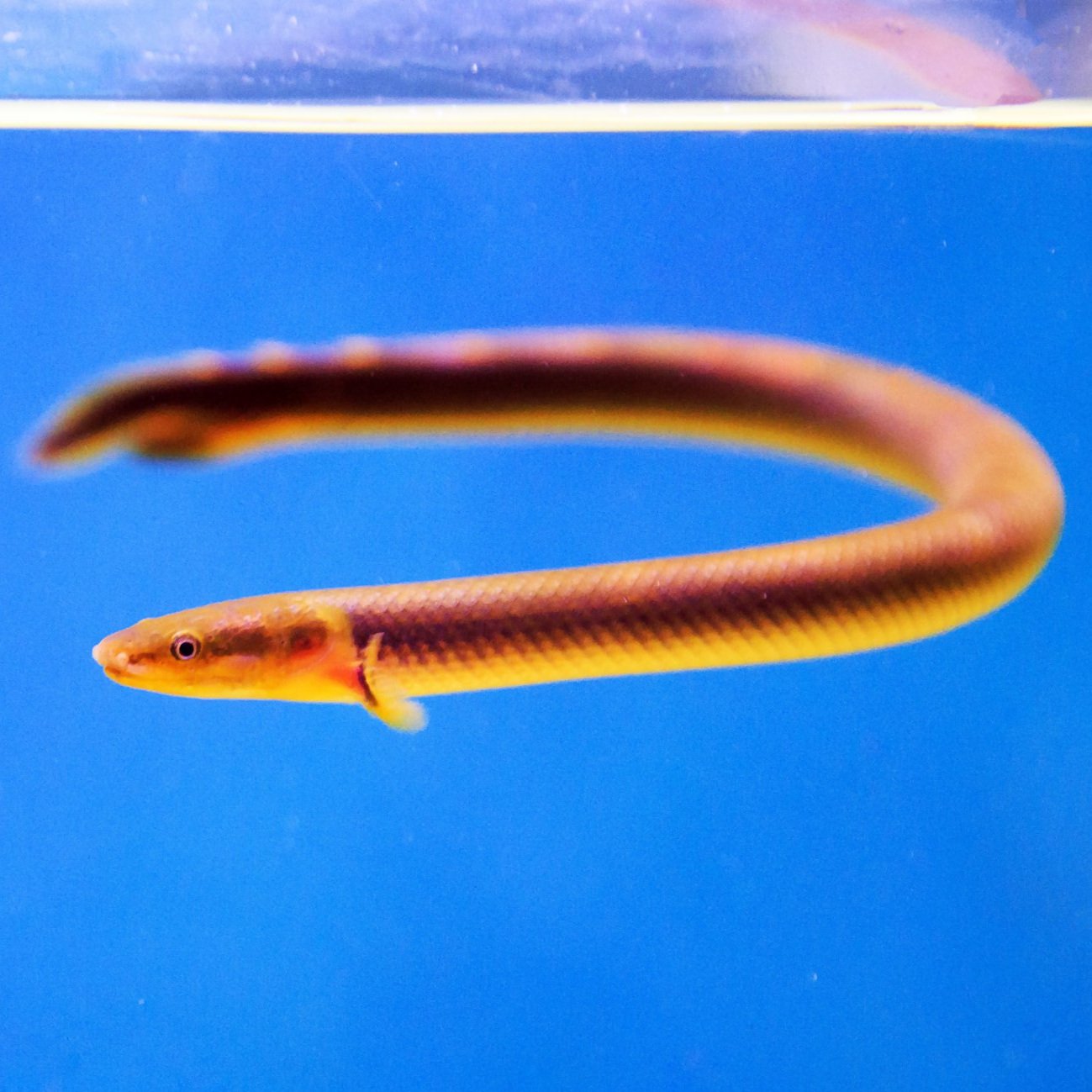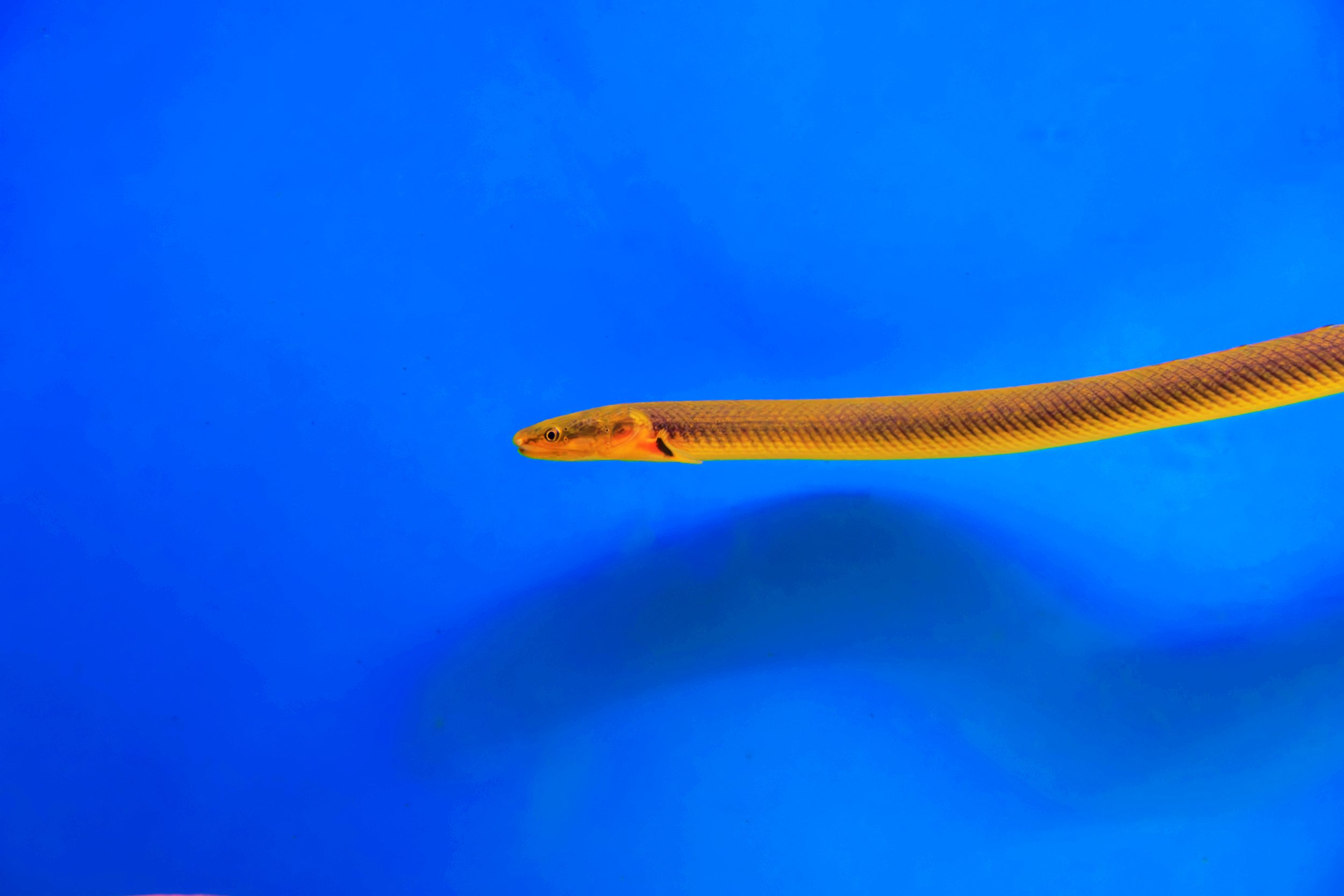 Image 1 of
Image 1 of


Glass Catfish
The Glass Catfish, scientifically known as Kryptopterus vitreolus, is a unique freshwater species native to slow-moving rivers, streams, and floodplain habitats in Thailand. This species is highly sought-after in the aquarium hobby for its distinctive transparent body, peaceful temperament, and graceful swimming behavior, making it an engaging and visually appealing addition to community aquariums.
Physically, Kryptopterus vitreolus is characterized by its almost entirely transparent body, through which the bones, internal organs, and spine are clearly visible. This fascinating transparency provides an unusual appearance rarely seen in freshwater fish. The Glass Catfish typically reaches a length of about 2.5 to 3 inches (6 to 7.5 centimeters). They possess slender, elongated bodies, delicate whisker-like barbels near the mouth, and small fins, contributing to their graceful swimming style.
In the aquarium, Glass Catfish should be kept in schools of at least six individuals, as solitary or small groups can lead to stress and shy behavior. A tank size of at least 20 to 30 gallons is recommended to comfortably house a small group and allow sufficient swimming space. Aquariums should be heavily planted with shaded areas and subdued lighting, replicating their natural habitat and providing security. Gentle water flow from filtration or air stones helps maintain optimal water quality and mimics their native environment.
Water parameters suitable for Kryptopterus vitreolus include temperatures ranging from 74 to 82°F (23 to 28°C), slightly acidic to neutral pH between 6.0 and 7.0, and soft to moderately hard water conditions. Excellent water quality, maintained by regular water changes and effective filtration, is crucial, as Glass Catfish are sensitive to fluctuations and pollutants.
Feeding Glass Catfish involves providing a varied diet, as they can initially be somewhat selective. They prefer live or frozen foods such as bloodworms, brine shrimp, daphnia, and tubifex worms. High-quality micro-pellets or flakes may be accepted over time. Providing nutritious, diverse foods promotes their overall health and vibrant behavior.
Kryptopterus vitreolus is a peaceful, shy species ideal for calm community setups. Suitable tank mates include other small, gentle species such as tetras, rasboras, small gouramis, and Corydoras catfish. Aggressive or highly active fish should be avoided, as they may intimidate or outcompete the delicate Glass Catfish for food.
Breeding Glass Catfish in home aquariums is very rare and challenging, with limited documentation of success. Most individuals available are wild-caught or commercially bred under specialized conditions.
Overall, Kryptopterus vitreolus (Glass Catfish) is a fascinating, visually distinctive, and peaceful species ideally suited for aquarists seeking unique and elegant fish. Their transparent appearance, gentle nature, and schooling behavior make them an exceptional choice for tranquil, well-maintained community aquariums.
The Glass Catfish, scientifically known as Kryptopterus vitreolus, is a unique freshwater species native to slow-moving rivers, streams, and floodplain habitats in Thailand. This species is highly sought-after in the aquarium hobby for its distinctive transparent body, peaceful temperament, and graceful swimming behavior, making it an engaging and visually appealing addition to community aquariums.
Physically, Kryptopterus vitreolus is characterized by its almost entirely transparent body, through which the bones, internal organs, and spine are clearly visible. This fascinating transparency provides an unusual appearance rarely seen in freshwater fish. The Glass Catfish typically reaches a length of about 2.5 to 3 inches (6 to 7.5 centimeters). They possess slender, elongated bodies, delicate whisker-like barbels near the mouth, and small fins, contributing to their graceful swimming style.
In the aquarium, Glass Catfish should be kept in schools of at least six individuals, as solitary or small groups can lead to stress and shy behavior. A tank size of at least 20 to 30 gallons is recommended to comfortably house a small group and allow sufficient swimming space. Aquariums should be heavily planted with shaded areas and subdued lighting, replicating their natural habitat and providing security. Gentle water flow from filtration or air stones helps maintain optimal water quality and mimics their native environment.
Water parameters suitable for Kryptopterus vitreolus include temperatures ranging from 74 to 82°F (23 to 28°C), slightly acidic to neutral pH between 6.0 and 7.0, and soft to moderately hard water conditions. Excellent water quality, maintained by regular water changes and effective filtration, is crucial, as Glass Catfish are sensitive to fluctuations and pollutants.
Feeding Glass Catfish involves providing a varied diet, as they can initially be somewhat selective. They prefer live or frozen foods such as bloodworms, brine shrimp, daphnia, and tubifex worms. High-quality micro-pellets or flakes may be accepted over time. Providing nutritious, diverse foods promotes their overall health and vibrant behavior.
Kryptopterus vitreolus is a peaceful, shy species ideal for calm community setups. Suitable tank mates include other small, gentle species such as tetras, rasboras, small gouramis, and Corydoras catfish. Aggressive or highly active fish should be avoided, as they may intimidate or outcompete the delicate Glass Catfish for food.
Breeding Glass Catfish in home aquariums is very rare and challenging, with limited documentation of success. Most individuals available are wild-caught or commercially bred under specialized conditions.
Overall, Kryptopterus vitreolus (Glass Catfish) is a fascinating, visually distinctive, and peaceful species ideally suited for aquarists seeking unique and elegant fish. Their transparent appearance, gentle nature, and schooling behavior make them an exceptional choice for tranquil, well-maintained community aquariums.
The Glass Catfish, scientifically known as Kryptopterus vitreolus, is a unique freshwater species native to slow-moving rivers, streams, and floodplain habitats in Thailand. This species is highly sought-after in the aquarium hobby for its distinctive transparent body, peaceful temperament, and graceful swimming behavior, making it an engaging and visually appealing addition to community aquariums.
Physically, Kryptopterus vitreolus is characterized by its almost entirely transparent body, through which the bones, internal organs, and spine are clearly visible. This fascinating transparency provides an unusual appearance rarely seen in freshwater fish. The Glass Catfish typically reaches a length of about 2.5 to 3 inches (6 to 7.5 centimeters). They possess slender, elongated bodies, delicate whisker-like barbels near the mouth, and small fins, contributing to their graceful swimming style.
In the aquarium, Glass Catfish should be kept in schools of at least six individuals, as solitary or small groups can lead to stress and shy behavior. A tank size of at least 20 to 30 gallons is recommended to comfortably house a small group and allow sufficient swimming space. Aquariums should be heavily planted with shaded areas and subdued lighting, replicating their natural habitat and providing security. Gentle water flow from filtration or air stones helps maintain optimal water quality and mimics their native environment.
Water parameters suitable for Kryptopterus vitreolus include temperatures ranging from 74 to 82°F (23 to 28°C), slightly acidic to neutral pH between 6.0 and 7.0, and soft to moderately hard water conditions. Excellent water quality, maintained by regular water changes and effective filtration, is crucial, as Glass Catfish are sensitive to fluctuations and pollutants.
Feeding Glass Catfish involves providing a varied diet, as they can initially be somewhat selective. They prefer live or frozen foods such as bloodworms, brine shrimp, daphnia, and tubifex worms. High-quality micro-pellets or flakes may be accepted over time. Providing nutritious, diverse foods promotes their overall health and vibrant behavior.
Kryptopterus vitreolus is a peaceful, shy species ideal for calm community setups. Suitable tank mates include other small, gentle species such as tetras, rasboras, small gouramis, and Corydoras catfish. Aggressive or highly active fish should be avoided, as they may intimidate or outcompete the delicate Glass Catfish for food.
Breeding Glass Catfish in home aquariums is very rare and challenging, with limited documentation of success. Most individuals available are wild-caught or commercially bred under specialized conditions.
Overall, Kryptopterus vitreolus (Glass Catfish) is a fascinating, visually distinctive, and peaceful species ideally suited for aquarists seeking unique and elegant fish. Their transparent appearance, gentle nature, and schooling behavior make them an exceptional choice for tranquil, well-maintained community aquariums.






